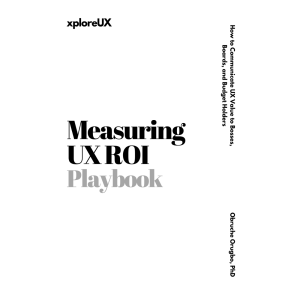
Health technology has the power to connect patients with care faster than ever. Yet for too many people — older adults, those with disabilities, or those unfamiliar with digital tools — these apps feel hard, confusing, or impossible to use. That gap doesn’t just block usage; it damages trust. Building accessibility in health-tech UX is not only a legal and ethical obligation but also a growth opportunity.
The rise of AI offers new tools to detect and fix barriers quickly. But AI alone is not enough. Human judgement is needed to ensure design feels respectful and inclusive. Together, AI and expert UX design can make accessibility in health-tech UX a standard rather than an afterthought.
Accessibility is not just about compliance checklists. In healthcare, it is about fairness, dignity, and effectiveness. If patients cannot read, hear, or navigate your app, they cannot manage their health properly. That erodes trust and outcomes.
Strong accessibility in health-tech UX makes care easier for everyone — from an older patient with vision challenges to a busy parent booking appointments on a small phone screen. It also expands reach: inclusive apps are usable by more people, which strengthens adoption and retention.
A common barrier to accessibility in health-tech UX is text that is too small or hard to read. Low contrast between fonts and backgrounds makes matters worse, especially for patients with impaired vision.
The fix: larger, scalable fonts and high-contrast colour options. AI scanning tools can detect low-contrast areas automatically, but human testers ensure the design feels comfortable in real use. Clear text is one of the easiest wins for accessibility in health-tech UX.
Some apps still use clinical terms or language that alienates patients. This weakens accessibility in health-tech UX, especially for those with limited literacy or non-native speakers.
Solution: plain language, translated options, and culturally sensitive wording. AI can translate and simplify text, while human reviewers check tone and nuance. Inclusive language ensures accessibility in health-tech UX works for everyone.
Many patients use health apps on phones with varying screen sizes. Buttons that are too small or too close together create frustration. Poorly designed touch targets are another barrier to accessibility in health-tech UX.
Fix: follow mobile accessibility guidelines — minimum button sizes, adequate spacing, and clear call-to-action labels. AI can highlight areas where users mis-tap, but human observation reveals the frustration behind those taps. Better targets equal stronger accessibility in health-tech UX.
Visually impaired patients often rely on screen readers. When apps are not coded with proper labels, the tools fail. This is one of the most damaging gaps in accessibility in health-tech UX.
Solution: add alt text for images, label all interactive elements, and ensure logical reading order. AI testing can flag missing tags, but manual checks are essential to confirm real-world performance. Screen reader compatibility is central to accessibility in health-tech UX.
Errors that reset forms or give unclear feedback are frustrating for any user, but devastating for patients who rely on accurate input. Weak error handling undermines accessibility in health-tech UX.
Fix: preserve data when errors occur, use clear messages, and offer guidance for correction. AI can track where errors happen most often, while human writers ensure instructions are gentle and supportive. Better error handling reinforces accessibility in health-tech UX.
Not all patients can type easily. For those with motor impairments, lack of voice support blocks use and harms accessibility in health-tech UX.
Solution: integrate voice commands for navigation and data entry. AI-powered speech recognition now makes this feasible, but human UX specialists must ensure commands are natural and accurate. Voice-friendly design strengthens accessibility in health-tech UX.
Many apps flood patients with charts, numbers, and technical language. This overwhelms and confuses, reducing inclusivity. Cluttered dashboards weaken accessibility in health-tech UX.
Fix: simplify. Highlight one or two key metrics with plain explanations. Offer detailed views as optional, not default. AI can analyse which metrics patients actually use, while designers shape displays for clarity. Streamlined dashboards improve accessibility in health-tech UX.
Older adults are among the heaviest users of healthcare but often struggle most with digital apps. Overlooking this group damages accessibility in health-tech UX.
Fix: test specifically with older patients. Increase readability, simplify tasks, and avoid unnecessary steps. AI tools can flag where older demographics drop out, while human testers identify the emotional reasons. Designing with age inclusivity at the core strengthens accessibility in health-tech UX.
Patients come from diverse language backgrounds. Limiting your app to one language excludes many and harms accessibility in health-tech UX.
Fix: provide multilingual support. AI translation helps scale, but human review ensures accuracy and respect. Cultural inclusivity builds stronger accessibility in health-tech UX and widens adoption.
Accessibility is not a one-time task. Health apps evolve, and so do patients’ needs. Neglecting updates creates gaps in accessibility in health-tech UX over time.
Fix: commit to regular audits, both automated and manual. AI can continuously scan for technical issues, but humans should validate real usability. Ongoing updates are essential to maintain accessibility in health-tech UX.
- AI brings speed and coverage. It can:
- Scan interfaces for contrast and font issues.
- Flag missing alt text or labels.
- Simulate journeys for users with different impairments.
- Analyse usage data to find points of struggle.
But AI alone cannot ensure trust. It may miss context, tone, or subtle barriers. Pairing AI detection with human judgement is the most effective way to improve accessibility in health-tech UX.
- Day 1–2: Run AI scans for text size, colour contrast, and missing alt tags.
Day 3–4: Review copy for plain language and cultural sensitivity.
Day 5–6: Resize buttons and test on multiple devices.
Day 7–8: Add or fix screen reader labels.
Day 9–10: Improve error handling with supportive messages.
Day 11–12: Integrate or test voice input features.
Day 13: Simplify dashboards; highlight key health actions.
Day 14: Run usability tests with diverse patient groups.By following this plan, teams address the most pressing accessibility in health-tech UX challenges in two weeks.
A digital pharmacy app struggled with older patients abandoning sign-up. AI scans showed low contrast text and missing form labels. User tests revealed patients found the wording too technical. By enlarging fonts, improving contrast, and rewriting copy in plain language, the app improved accessibility in health-tech UX. Within three months, sign-up completion increased by 40%.
In health technology, accessibility is not optional — it is the foundation of trust. Apps that fail to support all patients risk exclusion, mistrust, and poor adoption. The strongest products combine AI tools for speed with human empathy for nuance.
Improving accessibility in health-tech UX means clearer text, inclusive language, larger buttons, screen reader support, voice interaction, simpler dashboards, multilingual options, and continuous updates. Each fix strengthens patient confidence and widens your reach.
At xploreUX, we help health-tech teams identify accessibility barriers and remove them quickly. Book your free AI-enhanced UX audit today to discover the top accessibility in health-tech UX issues holding your app back.





